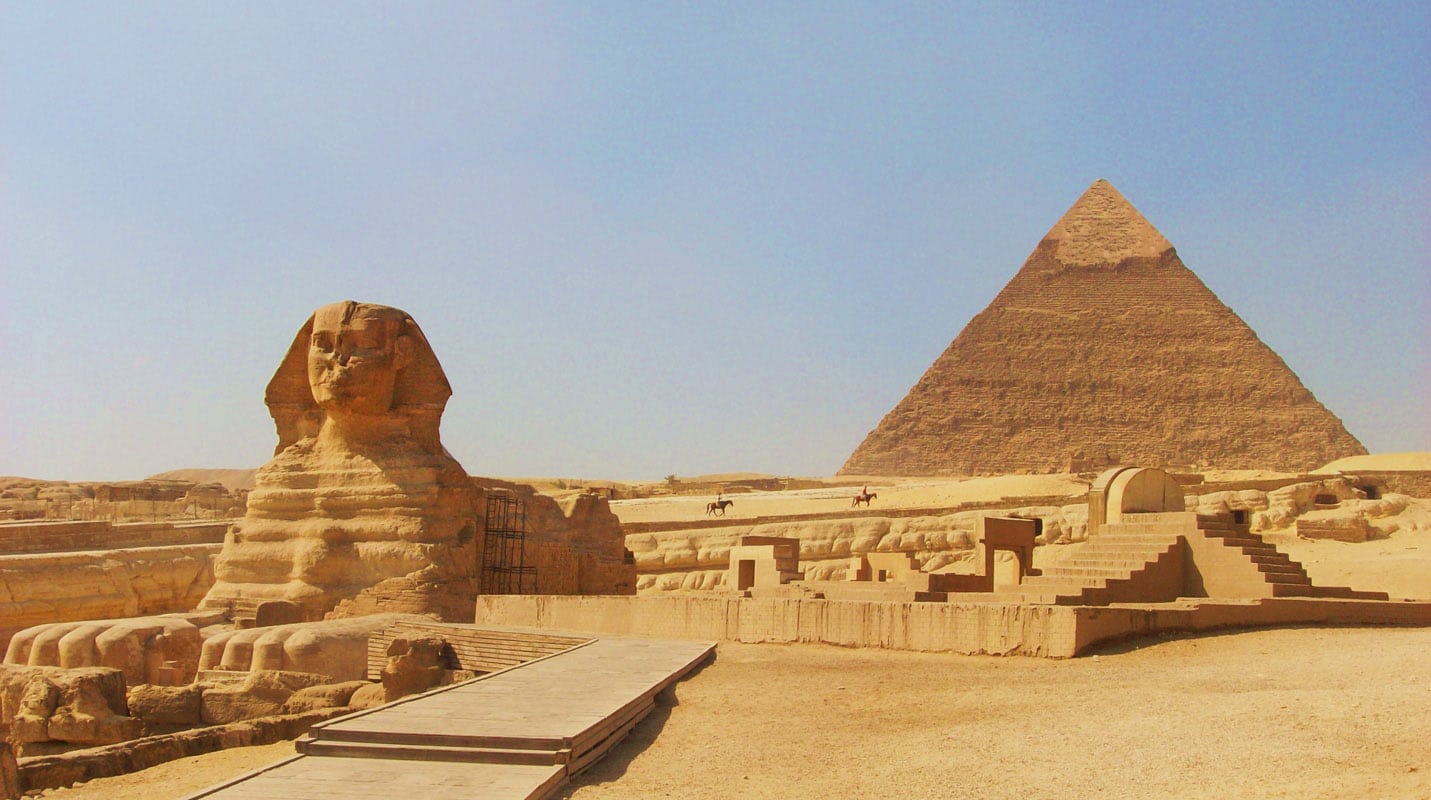Letölthető tartalmak
Listen to the article. Decide if the statements are TRUE or FALSE.
1) In Eqypt there are still large catering companies that only serve meat to workers and builders. T/F
2) Archeologist found the remains of what used to be a pyramid builders’ village. T/F
3) A work force of around 10,000 builders was working on the pyramids all year around. T/F
4) The builders were fed at least 20-25 grams meat from sheep, goat and cattle a day. T/F
5) All the pharaos who built pyramids also had builder’s villages in Ancient Eqypt. T/F
Answers: 1) F, 2) T, 3) F, 4) T, 5) F
Now try to match the pairs.
1) 1300
2) 35
3) 4,000
4) 25
5) 1,000
a) pig bones
b) years of research
c) feet south
d) pounds of meat
e) years of living
Answers: 1) c, 2) e, 3) d, 4) b, 5) a
Ancient burger vans: Archaeologists uncover remains of massive catering operation to feed builders who made the pyramids at Giza on 4,000lbs of meat a day
A massive catering operation that served up thousands of pounds of meat to feed the builders who made the famous Giza pyramids has been unearthed in Egypt, it emerged today.
Archaeologists found the ancient remains at a site believed to have been a village used to house workers about 1,300ft south of the Sphinx. It is thought the workers, who occupied the site for around 35 years, were building the pyramid of pharaoh Menkaure, the third and last pyramid on the Giza plateau. The site, which has been studied for several decades, is also known by its Arabic name, Heit el-Ghurab, and is sometimes called ‘the Lost City of the Pyramid Builders’. So far, researchers have discovered a nearby cemetery with bodies of pyramid builders, a corral with possible slaughter areas on the southern edge of the workers’ town and piles of animal bones.Based on animal bone findings, nutritional data, and other discoveries at this workers’ town site, the archaeologists estimate that an average of more than 4,000lbs of cattle, sheep and goat meat were slaughtered every day to feed the pyramid builders. This meat-rich diet, along with the apparent availability of medical care, shown by skeletons found with healed bones, show the workers enjoyed relatively good conditions.
Richard Redding, chief research officer at Ancient Egypt Research Associates, a group that has been excavating and studying the workers’ town site for about 25 years, told LiveSciencethe builders were looked after. Redding estimates he has identified about 25,000 sheep and goats, 8,000 cattle and 1,000 pig bones, he wrote in a paper published in the book Proceedings of the 10th Meeting of the ICAZ Working Group – Archaeozoology of southwest Asia and adjacent Areas.
Around 10,000 workers helped build the Menkaure pyramid, with a smaller work force present year-round to cut stones and complete preparation and survey work, the AERA team estimates. This smaller work force would have ramped up for a few months starting around July of each year. Redding, who is also a research scientist at the Kelsey Museum of Archaeology and a member of the faculty at the University of Michigan, added: ‘What they would do is, for about four or five months a year, they would bring in a big work force to move blocks, and they would do nothing but move blocks.’ The workers would need at least 45 to 50 grams of protein a day, Redding said. Half of this protein would likely come from fish, beans, lentils and other non-meat sources, while the other half would come from sheep, goat and cattle, he estimated.
Future studies will look for the remains of the workers’ towns of Khufu and Khafre, the two other pharaohs who built pyramids at Giza.
source: daily.co.uk
to unearth – felfedezni, kiásni
to emerge – kiderülni, feltárni
ancient – ősi, ókori
remains – maradványok
site – (ásatási) helyszín
to occupy – elfoglalni, lakni
decade – évtized
researcher – kutató
to discover – felfedezni
cemetery – temető
corral – karám
slaughter – mészárlás
pile – halom
findings – feltárás
nutritional – táplálkozási
apparent – látszólagos
availablility – hozzáférhetőség
medical care – egészségügyi ellátás
skeleton – csontváz
to heal – gyógyulni, forradni
conditions – feltételek, körümények
to excavate – kiásni, feltárni, ásatásokat végezni
to identify – azonosítani
adjacent – szomszédos, valami mellett levő
work force – munkaerő
year-round – egész évben
survey – felmérés, tanulmány, vizsgálat
to ramp up – összeszedni erejét, összpontosítani, fokozni
lentil – lencse







